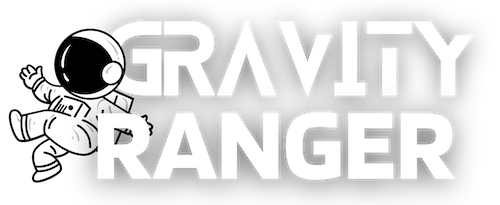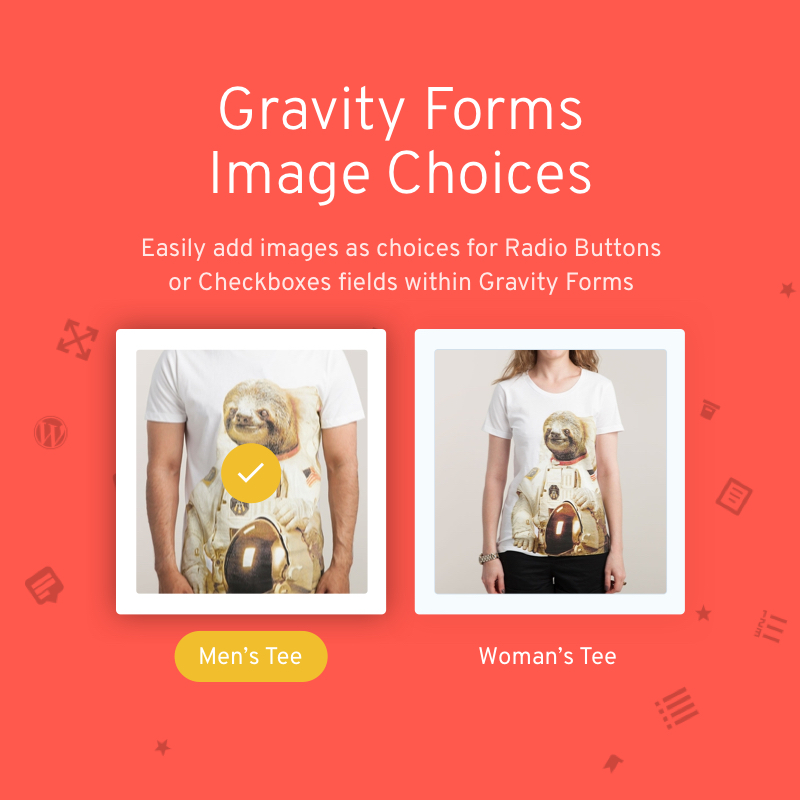When selecting a form plugin for your WordPress website, you’re likely to encounter a variety of options, each with its own set of features and capabilities. Two popular plugins in this category are Gravity Forms vs WS Form.
Gravity Forms has been a strong contender (some would say the best condenser) in the WordPress form builder space for years, providing users with a reliable and feature-rich experience. WS Form is a newer addition to the scene, offering an impressive array of functionalities that aim to streamline the form-building process.
Understanding the differences between Gravity Forms vs WS Form can greatly influence your decision-making process, as each plugin caters to specific needs and user preferences.
Your decision should ultimately rest on the specific requirements of your project. Whether you prioritize ease of use, advanced functionality, or integration capabilities, comparing Gravity Forms and WS Form side by side will help you select the form plugin that best suits your website’s needs.
Comparing Form Builder Features
When choosing a form builder, you should closely examine the features of each to determine which aligns best with your website’s needs. These comparisons will focus on core functionality, user interaction capabilities, and the integration of payment solutions.
Core Functionality and Form Fields
Gravity Forms offers a robust set of form fields that can be easily incorporated into your custom forms. With Gravity Forms, you have access to standard fields like text boxes and checkboxes, as well as advanced fields for uploads and website URLs. A clear advantage is the depth and flexibility of their field types.
WS Form also brings a competitive variety of form fields to the table. The form builder stands out with its adaptability on mobile and desktop interfaces and provides a high level of customization for responsive design. WS Form PRO has an advantage in its straightforward approach to mobile optimization.
Conditional Logic and User Interactions
Conditional logic is a critical feature for a dynamic form experience. Gravity Forms has a strong conditional logic system that allows you to show or hide fields based on user selections. This helps in creating intuitive forms that can adapt based on user input.
WS Form matches up with its own conditional logic that enables the showing or hiding of fields and triggers actions within the form. These can be complex, such as sending emails or changing field values, providing you with sophisticated control over user interactions.
Payment Processing and Gateways
Payment integration is essential for forms associated with transactions. Gravity Forms integrates with popular gateways like PayPal and Stripe, facilitating secure and efficient payment collection.
WS Form also supports these main payment gateways, allowing you to handle transactions directly within your forms. The focus of WS Form is to ensure that the setup process is seamless and that your forms can handle payments reliably.
When evaluating Gravity Forms and WS Form, you should consider their respective offerings in terms of form fields, conditional logic, and payment processing to see which form builder best suits your specific needs.
Ease of Use and User Experience
When comparing Gravity Forms vs WS Form, it’s crucial to consider how each plugin facilitates form creation and enhances your workflow. Both offer intuitive tools aimed at simplifying the form-building process, whether you’re a beginner or an experienced developer.
Drag-and-Drop Interfaces
Gravity Forms leverages a drag-and-drop builder that enables you to place fields onto your form with minimal effort. It’s designed to be responsive, meaning you can easily build forms that look great on both desktop and mobile devices.
WS Form also offers a drag-and-drop interface but with a unique emphasis on accuracy and precision. This is evident in features that allow for fine-tuning element spacing, sizes, and other properties directly through dragging, offering you a high degree of control over form layout.
- Gravity Forms:
- Responsive drag-and-drop experience
- Intuitive field placement
- WS Form:
- Precision-focused drag-and-drop controls
- Extensive layout customization options
Templates and Pre-Built Forms
With templates and pre-built forms, you can kickstart your form design process, saving time and energy. Gravity Forms provides access to a variety of pre-built templates suitable for a range of uses, from simple contact forms to more complex survey designs. Meanwhile, WS Form capitalizes on a vast library of responsive templates that are designed to function flawlessly across different devices, ensuring your users have a positive experience regardless of how they access your forms.
- Gravity Forms:
- Selection of versatile pre-built templates
- WS Form:
- Extensive library of responsive, ready-to-use form templates
Extensibility and Integrations
In the realm of WordPress form builders, the capacity to extend functionality and integrate with other services is a key differentiator. You’ll find that both Gravity Forms and WS Forms offer robust options to connect with various marketing platforms and CRM systems, but the depth and ease of these integrations can vary.
Marketing and CRM Integrations
Gravity Forms makes it straightforward to integrate with a multitude of marketing and CRM tools. With add-ons for services like ActiveCampaign, AWeber, Campaign Monitor, and HubSpot, you’re equipped to automate your email marketing and lead management processes directly from your forms.
- ActiveCampaign: Automate contact creation and list management directly from your form submissions.
- HubSpot: Feed submissions into your HubSpot CRM to nurture leads through your marketing funnel.
WS Forms also provides powerful CRM integration, catering especially to businesses with complex workflows. It supports integrations with many of the same services, and its Zapier integration unleashes the potential for thousands of secondary connections.
- Zapier: Connect to over 2,000 web services for comprehensive automation possibilities.
- Email Marketing Services: Direct integration with services like AWeber to manage subscribers and track email campaigns.
Developer-Friendly Features
Developers will appreciate the additional control both form plugins offer through developer-centric features. Gravity Forms excels with webhooks, which enable developers to send data from forms to any URL, providing the freedom to integrate with virtually any system.
- Webhooks: Send form data to custom scripts or applications for bespoke processing and integration.
WS Form extends its capabilities with an array of sophisticated development tools. It caters to developers looking for an advanced level of customization and integrates smoothly with ActiveCampaign, HubSpot, and other automation tools through webhooks and API connections.
- Developer Tools: Build complex forms that interact dynamically with databases, APIs, and conditional logic.
Performance and Security
When evaluating the performance and security of Gravity Forms versus WS Form PRO, it’s crucial to understand how each impacts your site’s speed and user data protection. Both plugins prioritize efficiency and security but take different approaches.
Gravity Forms is optimized for performance, ensuring minimal impact on your site’s loading times. It’s only as secure as the server and WordPress installation it runs on, so strict server and WordPress configurations are recommended for optimal security.
- Caching: Utilize built-in caching mechanisms.
- Security Updates: Regular updates to tackle vulnerabilities.
WS Form PRO, on the other hand, is known for offering a robust set of features that may affect your website’s speed based on the complexity of the forms built.
- Features: Packed with options that might reduce performance if overused.
- Customization: Allows in-depth customization that requires careful management to maintain speed.
Both plugins integrate security measures to protect forms from spam and unauthorized access.
- CAPTCHA: Incorporate CAPTCHA to prevent spam.
- Data Encryption: Sensitive data can be encrypted during transmission.
The choice between Gravity Forms and WS Form PRO should be based on your specific needs for performance and security. Consider the balance of features, form complexity, and your ability to manage security practices effectively. Choose the plugin that aligns with your priorities and ensures a safe, swift experience for your users.
Support, Documentation, and Community
When considering Gravity Forms vs WS Form as your WordPress form plugins, you want to ensure you’re backed with comprehensive support and documentation. Here’s a brief breakdown of what you can expect in these areas.
Gravity Forms provides extensive documentation, offering you a detailed knowledge base that covers both basic and advanced topics. If you’re a developer, you’ll appreciate the array of resources dedicated to customizations and hooks. Support-wise, they offer assistance through tickets, with priority support for users with higher-tier licenses.
- Documentation: Comprehensive knowledge base
- Developer Resources: Extensive with customizations and hooks
- Support: Ticket-based with priority options
In comparison, WS Form boasts thorough documentation as well, aimed at both regular users and developers seeking to extend the plugin’s capabilities. They maintain a reputation for responsive support through various channels, including support tickets.
- Documentation: Thorough and user-friendly
- Developer Resources: Available for enhanced plugin use
- Support: Responsive via tickets
Both plugins have cultivated active communities where users and developers exchange tips, solve problems, and share custom solutions. Look around for user reviews to hear others’ experiences with the plugins’ support and community aspects. This real-world feedback can be invaluable in guiding your choice.
| Feature | Gravity Forms | WS Form |
|---|---|---|
| Documentation | Comprehensive | Thorough |
| Developer Support | Extensive | Available |
| Community | Active | Active |
| User Reviews | Check for feedback | Check for feedback |
Your individual needs will determine the best fit. Whether you prioritize a vibrant community or prioritize developer resources, both plugins offer strong support structures to enhance your WordPress experience.
Pricing Plans Analysis
When choosing between Gravity Forms and WS Form for your WordPress site, your budget and the specific features you require are pivotal considerations. Here’s an assessment of how the pricing plans for these plugins stack up.
Comparative Cost Assessment
Gravity Forms offers a tiered pricing structure, starting with the Basic Plan at $59 per year. This plan is quite suitable if you’re managing a single website and need fundamental form-building capabilities. If your demands grow, you might consider upgrading to the Pro Plan which targets professionals and small businesses with more complex needs, typically priced at $159 per year. For a comprehensive solution that supports unlimited websites and includes all available add-ons, the Elite License is available for $259 per year.
In contrast, WS Form provides a more straightforward approach, where their Basic Plan starts at $50 per year, offering advanced form features from the get-go. The Pro Version enriches functionality with modules for marketing and CRM integrations, costing $150 annually. WS Form doesn’t have an equivalent to Gravity Forms’ Elite tier but does offer extensions and add-ons which can increase functionality at additional cost.
Comparison Table:
| Feature | Gravity Forms Basic | Gravity Forms Pro | Gravity Forms Elite | WS Form Basic | WS Form Pro |
|---|---|---|---|---|---|
| Yearly Pricing | $59 | $159 | $259 | $50 | $150 |
| Websites | 1 | 3 | Unlimited | 1 | 3 |
| Add-Ons | Limited | More | All included | N/A | Modules included |
Free vs Paid Features
Both Gravity Forms and WS Form offer premium versions that significantly expand on the functionalities of any free version. If you’re testing the waters or have minimal requirements, knowing what you can get for free is important.
Gravity Forms doesn’t have a freemium option; the entry point is the paid Basic Plan. However, with it, you get a robust form creator with essential features and support. On the flip side, WS Form offers a limited Free Version that’s good for getting a feel of its interface and basic features. If your needs exceed what’s available on the free plan, WS Form’s premium plans deliver a significant jump in advanced capabilities.
Remember, your choice should align with your specific needs and the value you place on the features offered by each plan. Budget accordingly and pick the plan that grants you the necessary tools without overcommitting financially.
Conclusion
When considering Gravity Forms vs WS Form, your choice largely depends on your specific needs and skill level. Gravity Forms prioritizes developer-friendly features and extensive integrations, while WS Form stands out for its advanced accessibility features and robust free version.
| Gravity Forms | WS Form |
|---|---|
| Extensive integration options | Strong focus on accessibility |
| Developer-oriented customizability | Comprehensive free version available |
| No free version | Advanced conditional logic |
You might find Gravity Forms to be a better fit if you require deep integration with other WordPress plugins and third-party services. It’s also the go-to option if you have development skills and need to customize your forms extensively.
WS Form may be your choice if accessibility compliance is a priority. Its free version gives you a taste of powerful features without initial investment, which is particularly appealing if you’re starting out or if you’re managing a budget-conscious project.
- Gravity Forms: ideal for developers and integration-heavy projects.
- WS Form: suitable for users prioritizing accessibility and cost-effectiveness.
Make your decision based on your project’s complexity, budget constraints, and desired level of customization. Both plugins are reliable and offer robust solutions for WordPress form building. Your final selection should align with your website’s requirements and the user experience you aim to provide.
Frequently Asked Questions
When considering a form plugin for your WordPress site, it’s crucial to understand the specifics of how they differ in features, pricing, and usability. Below, you’ll find direct answers to common queries about Gravity Forms and WS Form.
What are the key differences in features between Gravity Forms vs WS Form for WordPress users?
Gravity Forms is known for its robust set of features that cater to a wide range of form-building needs. It provides a simple, intuitive interface with powerful integrations. WS Form, on the other hand, is acclaimed for its modern, developer-friendly approach, offering advanced capabilities such as conditional logic and a more refined editor for creating responsive forms.
How do the pricing models for Gravity Forms and WS Form compare?
Gravity Forms typically offers tiered pricing plans based on the level of functionality you require, including add-ons and integrations. WS Form also has a tiered structure that varies based on features, such as e-commerce support and marketing integrations, intending to match the scale of your business and technical demands.
What advantages does WS Form offer over Gravity Forms for form building in WordPress?
WS Form is recognized for providing a highly flexible and responsive form solution with a focus on technical precision, making it a suitable choice if your priority is responsiveness and customization. It also emphasizes accessibility, ensuring that forms are compliant with accessibility standards.
Are there any free versions available for either Gravity Forms or WS Form, and how do they differ?
Neither Gravity Forms nor WS Form offers a completely free version. However, both have demo or lite versions that allow you to test some functionalities before committing to a purchase, giving you a taste of their interfaces and basic capabilities.
Which form plugin Gravity Forms vs WS Form is considered the most user-friendly for WordPress beginners?
WordPress beginners often favor Gravity Forms for its ease of use and minimal learning curve. Its intuitive drag-and-drop interface is designed with newcomers in mind, allowing for quick form creation without the need for coding knowledge.




